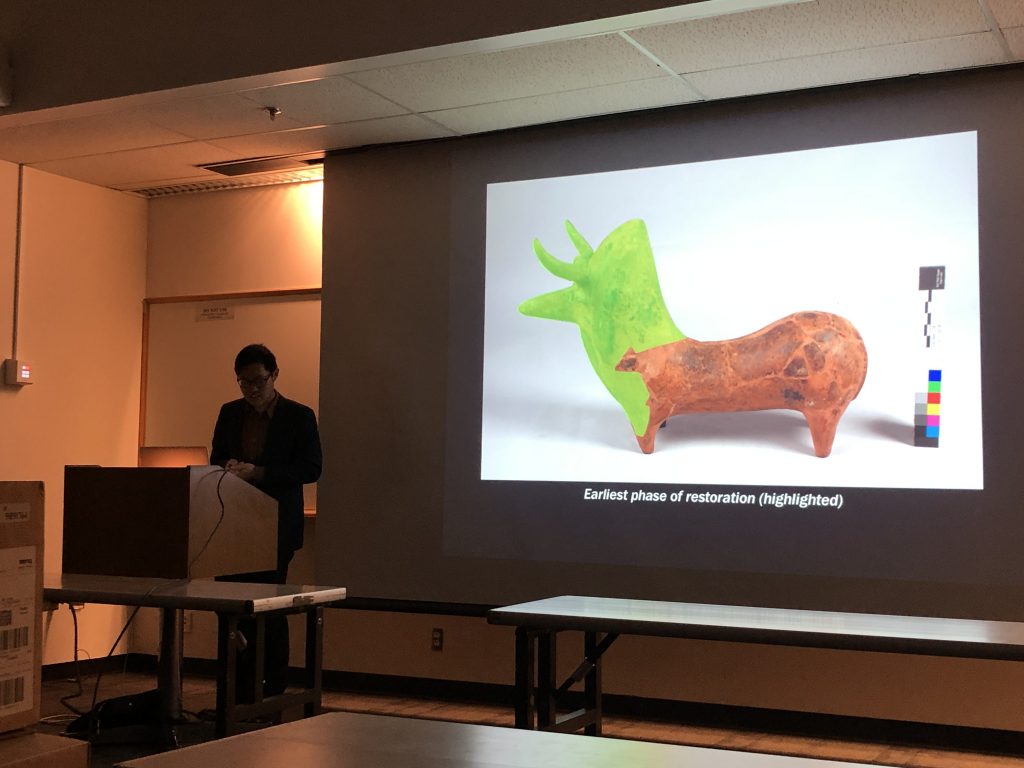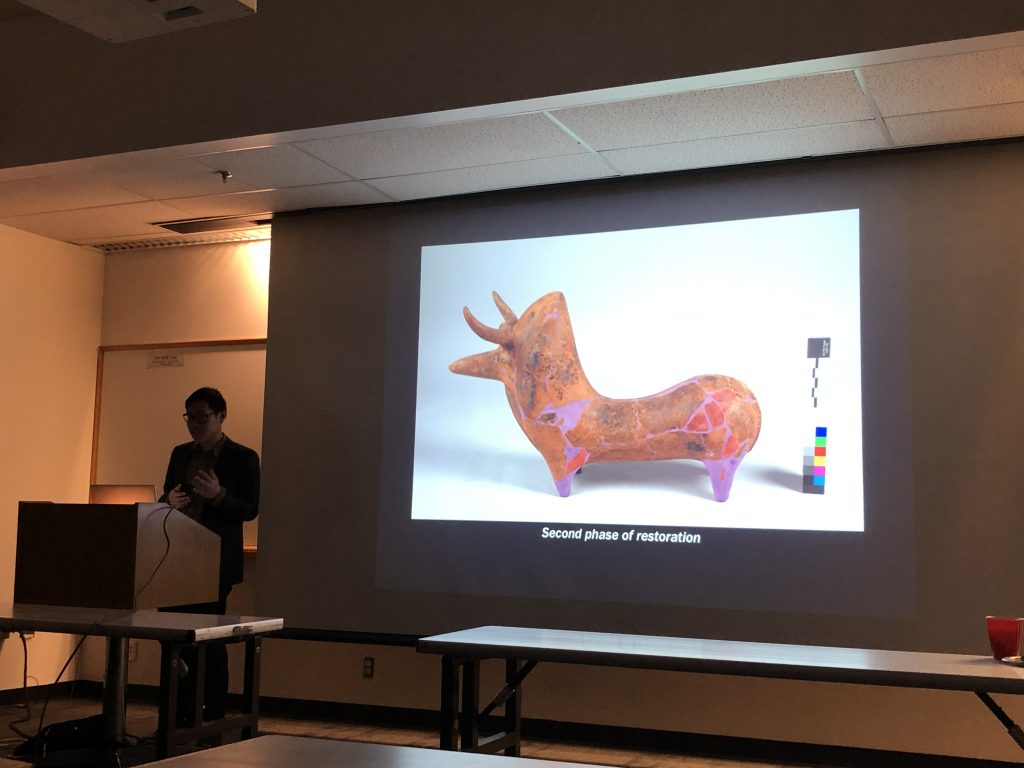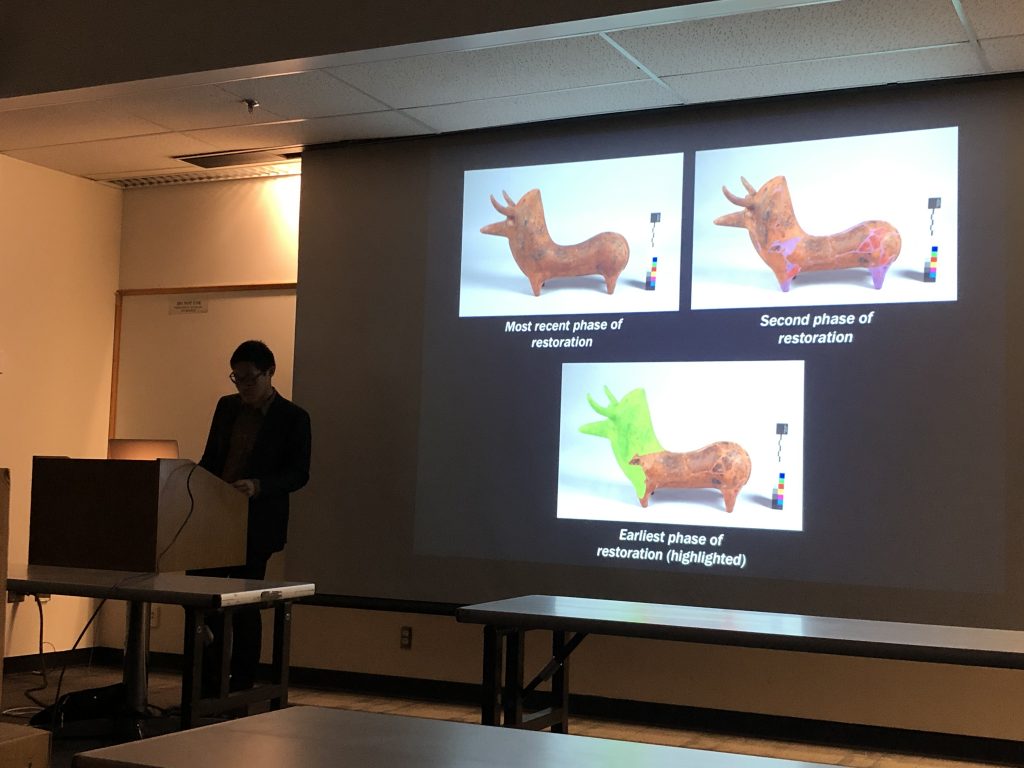WCG 3-Ring Circus Summary by Morgan Burgess
“When is conservation? Reimagining previous restoration in the treatment of an ancient Near Eastern zoomorphic ceramic vessel”
Soon Kai Poh

With his treatment of a zoomorphic ceramic vessel from the ancient Near East, Soon Kai Poh discusses an important consideration in treating, or rather, re-treating objects.
When we think about an object, do we think of it solely as the physical material existing singularly at its original use and manufacture? Or, do we think about an object as transcending time with each and every event occurring (and continuing to occur) in its lifetime as an integral part of that object’s history?
The examination of this zoomorphic vessel showed vast amounts of restoration and over-paint that obscured the original substrate, and x-radiograph images showed the extent of fragmentation and restoration done (the extent of fragmentation was not discernable under fills and overpaint used to smooth over the surface). In his assessments of the object, Soon Kai Poh identifies at least three previous campaigns of restoration, each an event in the object’s history. It became clear that completely disassembling the ceramic vessel posed more harm than good; the older restoration materials were not causing any significant issues. Disassembly would have constituted a major intervention involving some degree of speculative reconstruction. Some of the old fills were reduced and retouched so that more of the original surface was visible and the conservation efforts (fills and
joins) were obvious but not visually distracting.
In rationalizing his treatment actions by reframing previous restorations as events worthy of conservation themselves, Soon Kai Poh references Roberto Casati and Achille Varzi who say [objects are] “three dimensional entities that occupy space and persist through time by being wholly present at each moment of their existence” (Event Concepts, 2007). He later quotes the philosopher Nelson Goodman’s work, which prompts us to think about objects not as existing singularly within their time and culture of manufacture, but as “four-dimensional entities that extend through time just as they extend through space, and that persist through time by being partly located at each moment of their existence” (The Structure of Appearance, 1951). Each interpretation of an object, either four-dimensional through time existing partially or three-dimensional through time having existed fully, makes us consider not only the original manufacture and use of the object but also the history post-excavation; how it came to be unearthed, collection and purchase history, and of course the restoration and conservation history, of which our actions become a part.

